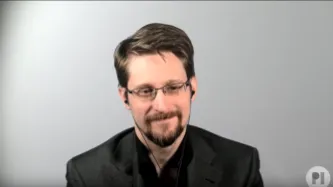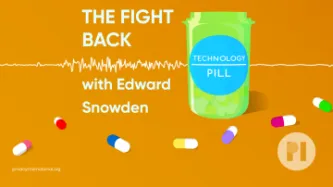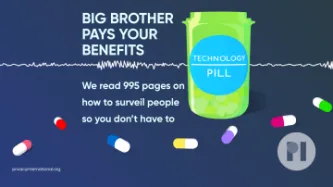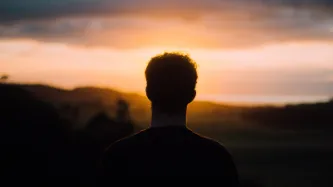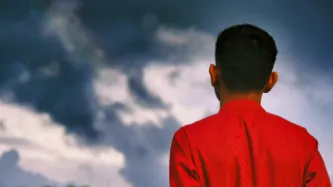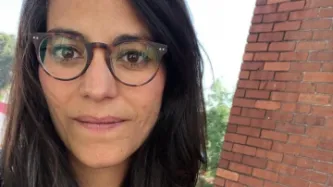Search
Content type: Examples
Documents acquired under the Government Information (Public Access) Act 2009 reveal that staff and student protests against cuts at the University of Sydney were surveilled by both the university administration and police, who have been widely criticised for using excessive force at education protests. The university administration conducted "risk reviews" of protests and looked for links between education protest organisers and other political organisations. Emails include screenshots of…
Content type: Examples
Over 2020, EFF supported the right to protest without being surveilled by bringing lawsuits, offering protesters legal support, teaching protesters surveillance self-defence, and providing tools for people on the ground to use to determine what equipment their local police departments are using to spy on activists. Via public records requests, EFF discovered that the San Francisco Police Department gained access to over 400 cameras belonging to the Union Square Business Improvement District to…
Content type: Examples
When Dallas police posted on Twitter asking for videos of the protests taking place after George Floyd's killing, a flood of videos and images of K-pop stars were uploaded to its anonymous iWatch Dallas tip-off app. Law enforcement can call on vast numbers of networked cameras - from cars, food and retail chains that are typically willing to share with police, law enforcement agencies' own networks of surveillance and body cameras as well as object and face recognition software, protesters and…
Content type: Examples
Despite having promised in 2016 not to facilitate domestic surveillance, the AI startup Dataminr used its firehose access to Twitter to alert law enforcement to social media posts with the latest whereabouts and actions of demonstrators involved in the protests following the killing of George Floyd. Dataminr's investors include the CIA and, previously, Twitter itself. Twitter's terms of service ban software developers from tracking or monitoring protest events. Some alerts were sourced from…
Content type: Examples
Following the January 6 invasion of the US Capitol Building, federal law enforcement used a wide variety of surveillance technologies to track down participants, including facial recognition, licence plate readers, policy body cameras, and cellphone tracking. While many of the people being tracked and charged are members of white supremacist groups, human rights organizations such as ACLU and EFF are concerned that the level of surveillance was excessive and poses a threat to peaceful protests…
Content type: Examples
New data emerged in January 2021 to show that the National Guard deployment of more than 43,350 troops during the nationwide demonstrations following the killing of George Floyd was far more extensive than had been realised, and far greater than the 6,200 troops deployed at the Capitol during the forewarned insurrection. At least 20 military surveillance and reconnaissance helicopters flew over protests in Philadelphia, Minneapolis, Atlanta, and Washington DC, raising concerns about the data…
Content type: Examples
Peruvian police have used force, arbitrary arrests, undercover infiltrators, tear gas, and forced disappearance against marchers protesting the removal of president Martín Vizcarra. Three protesters have been killed, more than 60 have disappeared, and hundreds have been injured. While the traditional media has either ignored the protests or depicted them as criminal, social media and the internet have been crucial in documenting police abuses via shared images and video. Police have begun using…
Content type: Examples
Hundreds of emails and documents obtained in response to a freedom of information request by BuzzFeed News show that US federal agents monitored social media for information on planned Black Lives Matter demonstrations in Minneapolis, Washington DC, Los Angeles, and other cities. Researchers and activists (such as EFF) warned that technology-driven surveillance of protesters could set a dangerous precedent and chill assembly and speech, particularly in the case of Black Lives Matter. The…
Content type: Examples
Human rights activists and Democratic members of the US Congress wrote to top law enforcement officials in the Trump administration to demand they cease surveilling Americans engaging in peaceful protests. Trump and others in his administration called those protesting the killing of George Floyd "domestic terrorists" and "anarchists". Recent efforts to surveil Americans have included facial recognition, automated licence plate readers, and Stingrays, as well as spy planes and drones.
https://…
Content type: Examples
During the Black Lives Matter protests of summer 2020, US police took advantage of a lack of regulation and new technologies to expand the scope of people and platforms they monitor; details typically emerge through lawsuits, public records disclosures, and stories released by police department PR as crime prevention successes. A report from the Brennan Center for Justice highlights New York Police Department threats to privacy, freedom of expression, and due process and the use of a predator…
Content type: Video
This case was made possible because of Edward Snowden’s disclosures in 2013, and through the combined work of Big Brother Watch, American Civil Liberties Union, Amnesty International, Bytes for All, Canadian Civil Liberties Association, Egyptian Initiative for Personal Rights, Hungarian Civil Liberties Union, Irish Council for Civil Liberties, Legal Resources Centre and Liberty.
Content type: Video
<br />
It’s been a long road, starting at the UK’s Investigatory Powers Tribunal in 2013, but this case would have happened without Ed’s revelations, which revealed the extent of those surveillance programmes. Which is why (around a year ago now) we sat down with him to talk about this case, mass surveillance and what we can do to fight back.
Find out more about the case here: https://privacyinternational.org/legal-action/10-human-rights-organisations-v-united-kingdom
And…
Content type: Long Read
This article was written by Sameet Panda and Vipul Kumar.
Over the last couple of years, there has been a push towards digitising the PDS, which includes linkage with the Aadhaar (India’s biometric identification system) and maintenance of digital records at Fair Price Shops that distribute the ration, among other initiatives. Without taking into account the availability of appropriate digital infrastructure and access among beneficiaries, these initiatives have been unable to solve…
Content type: Examples
Sidestepping the need to obtain a search warrant, the US Department of Homeland Security (DHS) has been accessing smartphone location data by buying it from private marketing that typically embed tracker in apps. This data, which maps the movement of millions of cellphones in America, was collected from ordinary cellphone apps, to which users gave access to their location. In this particular instance, it was used by the DHS to search for undocumented immigrants according to the Wall Street…
Content type: Video
Content warning: this episode includes some disturbing stories of people who have died after having their benefits cut or withdrawn by the UK Department of Work and Pensions
Links
Find out more about the DWP's surveillance
Find out more about the DWP's alogrithim
You can find out more about each of the cases of people who died after their benefits withdrawn below:
Errol Graham
The 5,000
Jodey Whiting
Phillipa Day
David Clapson
If you're having problems navigating the UK's…
Content type: Examples
As Europeans went back to work and social spaces in early summer 2020, they discovered that these had been newly equipped with a variety of technologies that brought surveillance with them as the price of preventing a resurgence of the coronavirus. Among the tools being adopted: a Romware Covid Radius bracelet, which beeps whenever two workers get too close to each other; laser technology to ensure social distancing in shopping malls; mask detection technology, facial recognition to ensure…
Content type: Examples
Numerous US colleges are forcing students to download location-tracking apps or wear symptom-tracking devices, many of them similar to tracking systems student athletes are often required to install on their phones. Tracking athletes did little to help them gain either an education or a professional career and backfired when they bypassed the system to reclaim some privacy. Tracking the student body at large is likely to follow suit, with dangerous consequences for public health. In addition,…
Content type: Examples
Students arriving for the fall semester at the University of Arizona were required on arrival to take a rapid COVID-19 test. Those testing negative could proceed to move into their dorms and begin campus life; those testing positive were required to spend ten days in a special isolation dorm and take classes online. The university also set up wastewater sampling to provide an early warning system to detect emerging hot spots. The system enabled the university to detect and isolate two cases…
Content type: Examples
A nationwide US study plans to examine the impact on employer surveillance of the shift of workers from on-site office environments to working in their homes. The authors intend to highlight worker (dis)comfort and concerns.
Source: https://covid19research.ssrc.org/grantee/how-covid-19-is-changing-workplace-surveillance-american-workers-experiences-and-privacy-expectations-when-working-from-home/
Writer: Jessica Vitak and Michael Zimmer
Publication: Social Science Research Council
Content type: Examples
As working from home expands, employers are ramping up surveillance using the features built into software such as Microsoft Teams and Slack, which report when employees are active, or requiring employees to attend early-morning video conferences with webcams switched on. In early 2020, PwC developed a facial recognition tool to log when employees are away from their home computer screens.
Source: https://www.theguardian.com/world/2020/sep/27/shirking-from-home-staff-feel-the-heat-as-…
Content type: Examples
The US company Hubstaff, which provides monitoring software to employers, says its UK customer base quadrupled between February and October 2020. The software tracks workers’ hours, keystrokes, mouse movements, and website visits. The Chartered Institute of Personnel and Development warns that workplace surveillance can damage trust.
Source: https://www.bbc.co.uk/news/business-54289152
Writer: Lora Jones
Publication: BBC
Content type: Examples
While countries like New Zealand, Singapore, and South Korea publish detailed near-real-time data on local coronavirus outbreaks, the US offers very few details on how the disease is spreading due to political meddling, privacy concerns, and long-time neglect of public health surveillance systems. CDC reports are often delayed until after they can influence outcomes, a problem that has not been helped by the Trump administration’s decision to divert data from the CDC to a new $10 million system…
Content type: Case Study
Sebastián Gómez is a land rights defender. He is based in Colombia.
Qn: Please briefly describe your work and the issues/topics you work on.
I am researcher for an organisation working on topics related to the defense of the territory and environmental protection. We operate in different regions, including those which have been historically subjected to violence due to the armed conflict and which are now experiencing a spike in a range of environmental conflicts. Our work consists of…
Content type: Case Study
amaBhungane is an independent, non-profit newsroom based in South Africa. amaBhungane plays a key role in exposing corruption, promoting transparency and accountability at all levels of government. In recent years, amaBhungane has been at the forefront of privacy litigation in amaBhungane Centre and Sole Stephen v. Minister of Justice and Correctional Services and others, a challenge to South Africa’s expansive surveillance laws.
Qn: Please briefly describe your work and the issues/…
Content type: Case Study
Ananda Badudu is an activist, musician and former journalist. In September 2019, he started a crowdfunding campaign page to support student protesters taking part in demonstrations against the Indonesian House of Representatives.
Qn: Please briefly describe your work and the issues/topics you work on.
I’ve been full-time musician for 2 years. Before that I was a journalist from 2010 to 2016, first at Tempo, then at Vice. In late September 2019, I took part in a crowd-funding campaign…
Content type: Case Study
Centro Prodh is a non-profit civil association which promotes human rights, and has been involved in some of the most emblematic cases in Mexico. The impact of their work is only matched by the severity of surveillance threats they face. In his end-of-mission statement after a visit to Mexico, the former Special Rapporteur on the situation of human rights defenders expressed specific concern about Centro Prodh in light of its being targeted for its work on enforced disappearances,…
Content type: Examples
A growing number of companies - for example, San Mateo start-up Camio and AI startup Actuate, which uses machine learning to identify objects and events in surveillance footage - are repositioning themselves as providers of AI software that can track workplace compliance with covid safety rules such as social distancing and wearing masks. Amazon developed its own social distancing tracking technology for internal use in its warehouses and other buildings, and is offering it as a free tool to…
Content type: Examples
As part of efforts to make returning to campus safer, US universities are considering or implementing mandates requiring students to install exposure notification apps, quarantine enforcement programs, and other unproven new technologies, risking exacerbating existing inequalities in access to both technology and education. In some cases, such as Indiana University, UMass Amherst, and the University of New Hampshire, universities are requiring students to make a blanket commitment to install…
Content type: Examples
In late May, Florida fired Rebekah Jones, its geographic information system manager and architect of the state’s COVID-19 data and surveillance dashboard. The dashboard was praised on TV two weeks earlier by Deborah Birx, the coronavirus response coordinator for the White House Coronavirus Task Force for its accessibility and transparency. A spokeswoman for Florida governor Ron DeSantis blamed Jones’s firing on “insubordination”. A week before, across the state line in Atlanta, Georgia, the…
